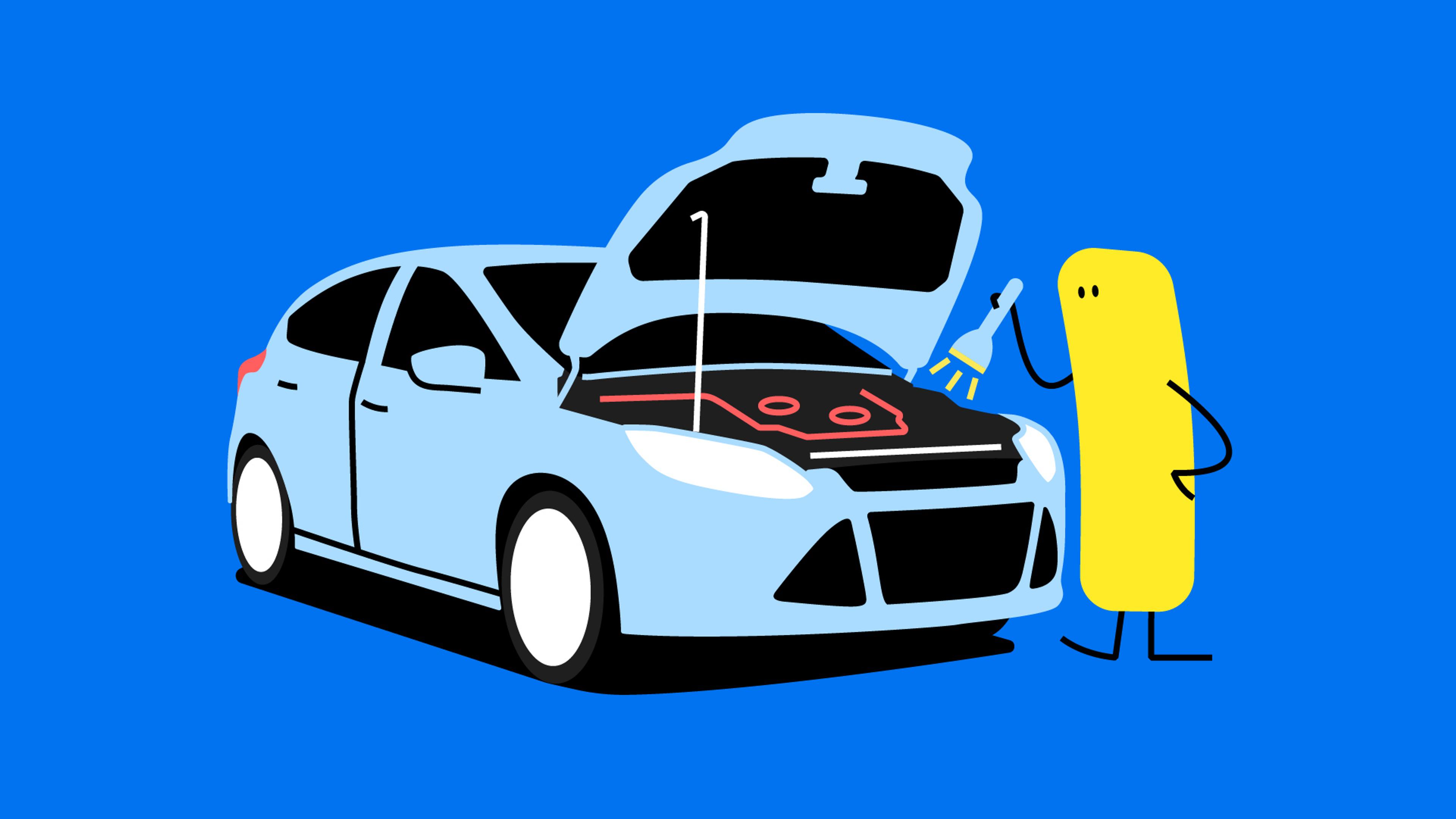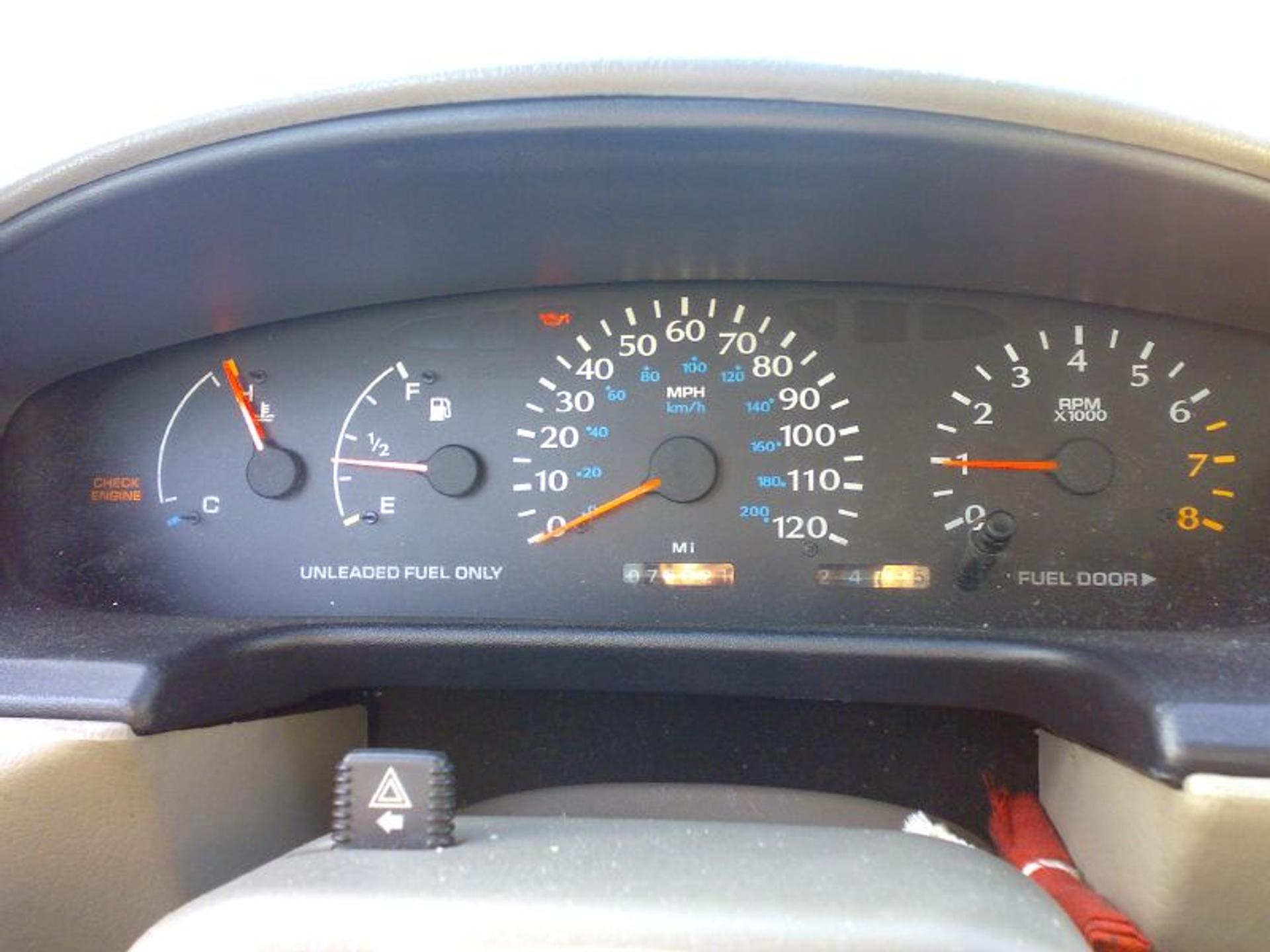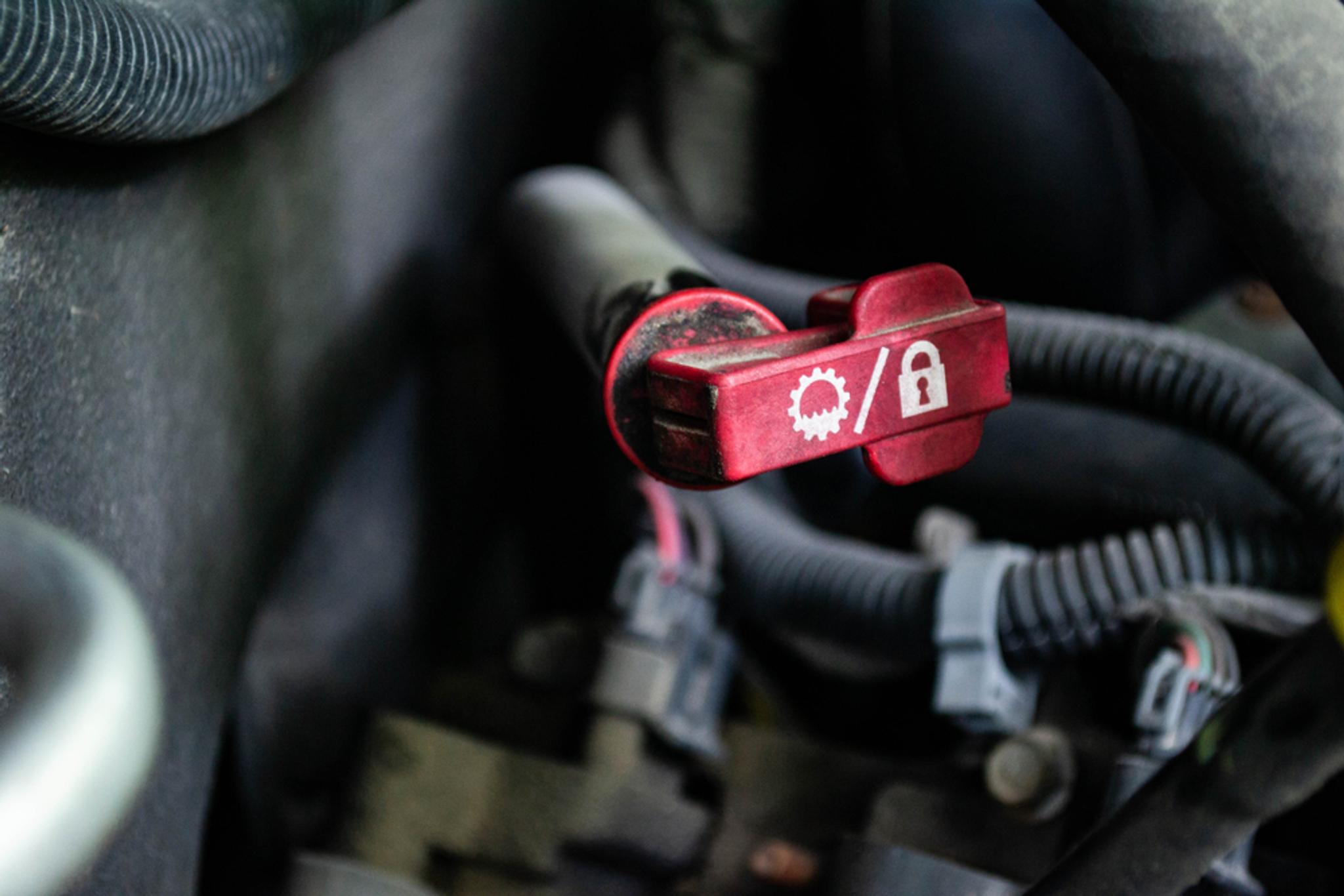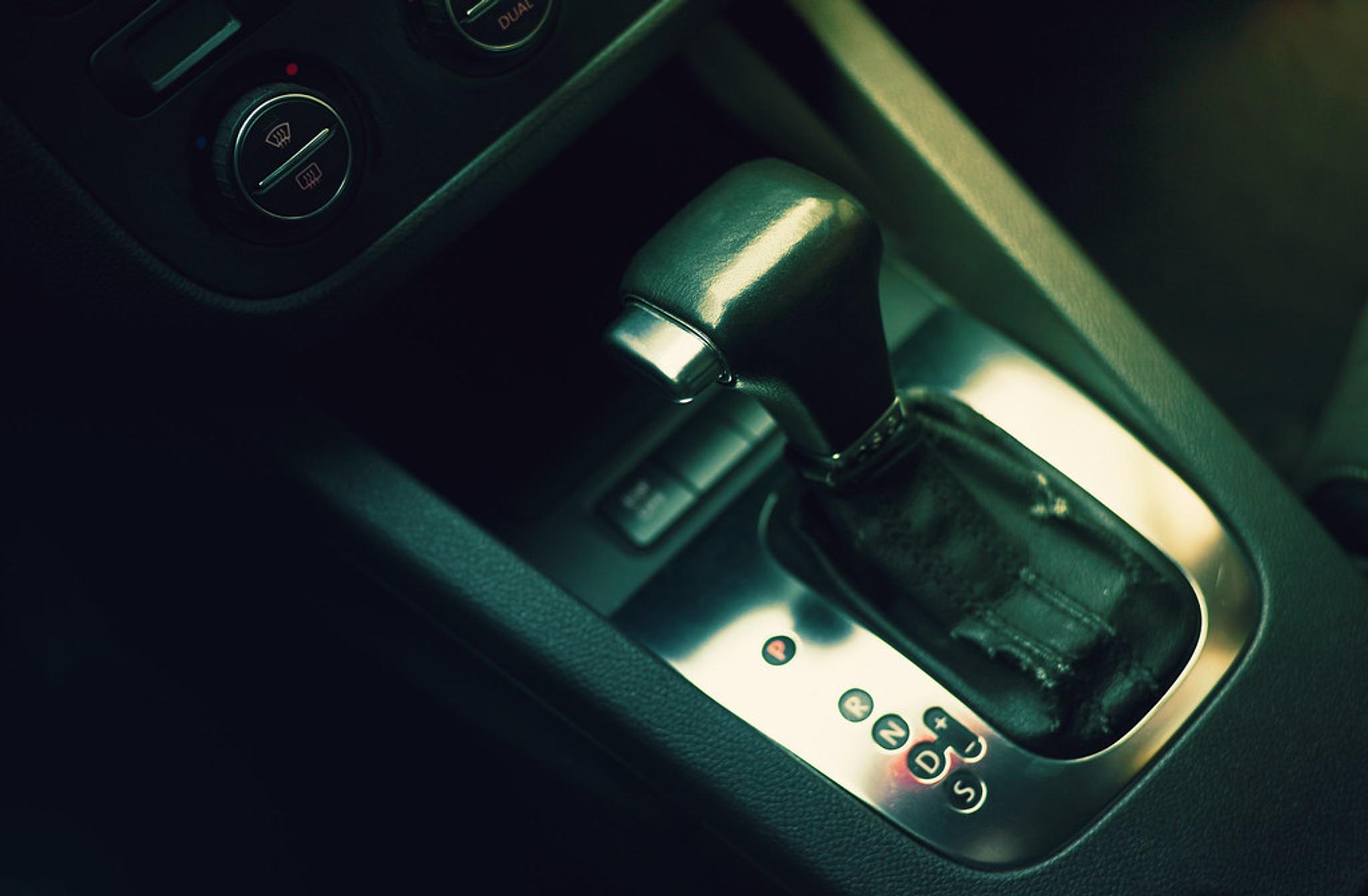20/11/2023
How to test a car’s engine and transmission

Your car’s engine and transmission are the dynamic duo responsible for the power, performance, and overall driving experience. They're also the most expensive to fix, and wear and tear can take a toll on these critical components, leading to many unpleasant situations on the road.
Learning about common issues, their symptoms, and initial troubleshooting procedures is essential for preventing such situations and ensuring the longevity of your vehicle.
So, how to take care of your car’s engine and transmission so that they continue to operate at their best?

Need help buying a used car?
Enter a VIN code to learn more about any vehicle!
The importance of testing your car’s engine and transmission
The engine and transmission are among the most crucial components of a vehicle. Engine generates power, while transmission transmits it to the wheels. Without transmission, a car’s engine would be connected to a running gear directly, meaning it would accelerate slowly, struggle to reach a decent speed, and the engine would be under much more pressure.
Regular car engine and transmission check is essential because it helps to reveal problems earlier, avoid costly repairs, and drive safely.
Potential engine and transmission problems

Any automotive expert would tell you that proper car maintenance helps avoid premature wear, especially when it comes to engines and transmissions. Even a small rattle can turn into a catastrophic engine failure when ignored because there are lots of small, relatively inexpensive parts that are vital. Moreover, even the smallest faulty engine or transmission parts can lead to the replacement of an entire engine.
Unfortunately, even with strict maintenance, various problems can still happen. Some of the worst engine and transmission problems that occur due to neglecting regular car maintenance and ignoring obvious problem signs are:
- Seized engine
- Overheated engine
- Broken timing belt/chain
- Damaged transmission gears
- Overheated transmission
- Fried control units
Some of these problems can even be caused due to a lack of coolant, resulting in repairs that will cost you a fortune and will leave you without a car for weeks. And while these are among the costliest and most time-consuming issues, the list could go on for hours, involving thousands of other problems you can face.
The good thing is that a few simple testing procedures can help you avoid most of these problems before it’s too late.
Testing the car’s engine
Internal combustion engines convert chemical energy into mechanical energy, pushing down the pistons that spin the crankshaft. However, there are lubrication, cooling, and various other systems to fight friction, high temperatures, and contamination.
Your mechanic can perform a thorough inspection to point out the exact problems, but when you experience issues in uncomfortable situations, knowing how to perform an initial check can let you figure out what that new knocking sound or burning smell means.
Visual inspection

A simple visual inspection should be the very first step of troubleshooting as it’s quick and reveals many issues right away. Just pop the hood and thoroughly look for such signs as:
- Leaks. Nothing should leak in an engine bay. Make sure the engine and its accessories are dry.
- Damaged or loose hoses. Radiator, power steering, and air intake hoses should be intact, without any visible cracks or tears.
- Damaged or oxidized wiring. Wire insulation can be damaged when the wire rubs against other surfaces. This often happens when supporting clips are broken or missing. Also, excessive humidity causes oxidation and hurt the connections.
- Worn or damaged belts. You should see a couple of accessory belts in front of your engine. They usually run the alternator, AC compressor, water pump, and power steering pump, so these systems may malfunction or stop working if an accessory belt is damaged.
- Corrosion. Check if all metal parts and tubes are intact.
You can also test a car’s engine when it's running – this helps to check if belts are loose or some fluids are leaking under pressure. However, if there’s a serious problem with the engine, starting it may cause even more damage, so be cautious.
Check fluid levels
Cars use various kinds of fluids, and most of them are accessible via engine bay – engine oil, coolant, brake, power steering fluid, and windshield washer fluids.
Engine oil is one of the most important fluids in a car – it slows down engine’s wear, traps contaminants, and distributes heat. Coolant ensures that the engine and its components operate in optimal temperatures, while brake and power steering fluids supplement hydraulic systems.
Make sure to check these fluids once a month or after noticing something’s out of order. When their levels are below minimum, there’s probably a leak that you should address. Also, pay attention to fluid colors – if your engine oil is creamy white instead of brown or black, your head gasket is probably blown. Coolant should be brightly colored, not white, black, or brown.
If the engine has been running, wait at least half an hour after shutting it down to avoid burning yourself when checking fluids.
Checking for weird noises and smells
Normally, every detail of modern engines is engineered to near perfection, making them quiet and smooth. When something loosens or breaks, some components may start hitting, grinding each other, or cause overheating, leaks, and other noticeable issues.
Depending solely on sounds when troubleshooting is often a shot in the dark, but you can still decide how serious the problem is. Squeaking noises are often related to loose or worn belts, low-pitched humming or grinding noises can be caused by poor lubrication or loose internal components of an engine, knocking sounds can mean numerous things from damaged valves to uneven fuel combustion. Either way, unusual sounds often mean major issues that should be addressed accordingly.
Pay attention to weird smells, too. They appear due to excessive engine heat, damaged exhaust system, or various fluids start leaking and dripping on hot engine areas. Not everyone can tell the difference between the smells of each fluid, therefore, keep in mind that burning smells indicate a potentially hazardous situation, while the smell of exhaust fumes means that the exhaust is leaking.
In short, if you notice any weird noises or smells and aren’t sure what it is, don’t take risks, shut down the engine, and contact your mechanic.
Scan for fault codes
While this is the only part of car engine testing where a tool is required, an OBD-II scanner is totally worth it. Why? Because modern cars can have over 100 control units, each controlling engine, powertrain, brake, infotainment, and many other systems. When something malfunctions, control units see that as a problem and activate specific fault codes that you can reveal using these code readers.

Usually, when there’s a problem with the engine, an orange check engine light appears in the dashboard. However, a check engine light only warns you that there’s a problem with the engine, so you still have to find out more about it by hooking up an OBD-II scanner.
Besides, malfunctions can appear even without a warning light, but checking fault codes can help identify the problem and solve it before it progresses into something worse.
If you have, or are going to buy, an OBD-II scanner, getting fault codes is as simple as connecting the tool to your car (the port is usually located under the dash), turning on the ignition, and clicking on “read fault codes.”
Remember that code readers only reveal fault codes and can delete them, but they won’t solve problems. These are the tools that help diagnose the problem, therefore a mechanic still has to fix it afterwards.
Performance tests
Automotive experts often say that you should never buy a used car without test-driving it because many problems appear only while driving. Therefore, regardless if you’re buying a used car or just troubleshooting your own vehicle, a short drive can do the trick.
Since we’re talking about potential engine issues, it’s worth remembering that worn or damaged engines usually underperform, meaning the acceleration is sluggish, the gas pedal is unresponsive, and you may notice excessive exhaust smoke or smell weird scents.
The acceleration should feel smooth and even, you shouldn’t feel any stuttering when maintaining speeds. Poor engine performance is usually caused by bad fuel mixture, but it can also happen because of faulty sensors and other electrical issues.
Don’t forget to take a peek at the dashboard once in a while to ensure it’s clear of warning lights and the engine isn’t overheating.
Testing the transmission
Your car’s transmission plays a pivotal role in fuel economy, acceleration, comfort, and other general aspects, so keeping it in top condition is essential.
Since the transmission is constantly in motion, connecting and disconnecting the engine from a running gear and maintaining specific pressures, it wears down over time and is prone to damage when not maintained properly.
Let’s review some steps that can help you test a car’s transmission and make brief assumptions.
Fluid check
Transmission fluid cools and lubricates the internals, so it’s vital for a transmission’s longevity. Over time, the fluid can become contaminated, start leaking, and lose its properties. So, it must be checked regularly.

Normally, you should be able to find an orange or red dipstick at the back of your engine bay, which lets you measure a transmission fluid level. Automatic transmission fluid should be red, otherwise it’s old, burnt, or contaminated, and should be replaced. Fluid in manual transmissions is normally amber, and becomes brown as it ages. The fluid level is also very important – it should read between MIN and MAX markings on the dipstick, otherwise the fluid is leaking.
Modern technology also brings other possibilities, therefore, dipsticks are often replaced with digital sensors. Also, many car manufacturers use completely sealed transmissions with lifetime fluid inside. They usually don’t have drain plugs or dipsticks, so you won’t be able to check it. However, that “lifetime” statement usually means the fluid will last the expected lifetime of a car (3-5 years warranty period), therefore, experts often still recommend replacing the transmission fluid every 60,000-100,000 miles.
Checking for weird noises and smells
When you notice weird smells or noises coming from your car, one of the main challenges is to find its source. Various humming, knocking sounds, burning smells, and vibrations mostly come from the engine, transmission, or drivetrain, but there are a few things you can notice when the problem is related to transmission.
Worn or damaged transmission often emits low-pitched humming or knocking noise, which becomes louder as you accelerate. Sometimes it appears only in particular gears, which is a strong sign that the problem is related to transmission.
When the friction in transmission increases due to worn fluid or lack of it, you can even smell burning metal parts. Unfortunately, it’s very difficult to tell where the smell is coming from, so it’s a sign to stop the car and call your mechanic.
If you’re driving a manual, you may face clutch problems that also come with their own specific sounds. For instance, when a flywheel is worn, you may hear rattling sounds. They are louder when starting and stopping the engine, but should diminish or disappear when a clutch pedal is pressed.
Performance tests on the road
Various car manufacturers design transmissions differently, prioritizing specific properties and characteristics. Therefore, they also function differently and require more effort to test a car’s transmission properly. However, when a transmission starts acting weird, you can usually notice that there’s a problem.
Let’s take a look at how automatic and manual transmissions should and shouldn’t work.
Automatic transmission
Modern CVT and DSG automatic gearboxes are incredibly smooth and can shift almost seamlessly, while older traditional transmissions can be a bit more primitive. However, they shouldn’t jerk, delay shifting, or shift unexpectedly. Just remember that during hard acceleration, shifts are delayed to gain more power and agility, but shifting is usually much slower when cruising at regular speeds.

One of the more common automatic transmission issues is a worn torque converter. When driving, observe the engine RPM. When the transmission isn’t shifting and you’re maintaining the same speed, make sure the RPM doesn’t fluctuate, otherwise the torque converter may be worn and need replacing.
Problematic transmission behavior can also be caused by the lack of transmission fluid, faulty solenoids, sensors, or mechanical damage. Either way, transmission repairs are often complicated and should be done by experts.
Manual transmission
Manual transmissions are significantly simpler than automatic ones, but they share many similar problems. When operated properly, a manual transmission should also be smooth. You may notice unusual sounds when something breaks or a bearing fails, a low-pitched humming noise when the gearbox is low on fluid, and some gears may be hard to change when transmission internals are worn or there’s something wrong with the clutch.
Talking about clutch, drivers often misinterpret gearbox issues with clutch problems. Some parts of a clutch last 30,000 miles, while others go over 100,000 miles, therefore, many drivers replace only worn parts of the clutch instead of replacing an entire unit, making clutch problems more common.
Since engine and transmission are the key systems of most cars, regularly testing and monitoring their performance not only ensures your car's longevity but also safeguards your driving experience.
Just remember that these steps are only for an initial check – a thorough inspection should be performed by an expert before repairs, and a vehicle history check should be implemented when buying a used vehicle. Either way, don’t ignore signs that something’s wrong and stay safe.

Check your VIN
Avoid costly problems by checking a vehicle's history. Get a report instantly!
